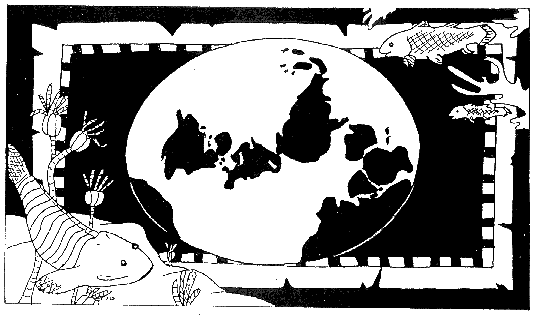








History of B.C.

Early Plants and Forests

In the Silurian period, Laurentia continued to flood. The northern prairies and parts of the Northwest Territories were the only parts of Laurentia showing above water. Gondwana slid southward and now covered a good portion of southern Earth. Some creatures that appeared in this period were sea scorpions, coral colonies, horn coral, coiled nautiloids (squids), and jawless fish.
Land plants and animals existed in the Silurian period, but not in British Columbia, as there was no land. The first land plants evolved from the green algae in the water, and by the end of the Silurian, leafless land plants had been established along the coast and in damp, low-lying areas. The land plants made life on land possible for animals. They provided moist, nutrient-rich dwellings for the animals, whose sensitive outer shells needed protection from the sun. Among the first animals on land were sea scorpions, land scorpions, millipedes and ticks.

In the early Devonian period, Laurentia slid together with Siberia and Baltica, to form what was known as Laurussia (the combination of present-day Europe and North America). This caused British Columbia to move further away from the Equator. During this period is when the early sharks made their debut, along with spiny trilobites. Western Canada was covered by shallow seas, which were ideal for reef growth. Devonian reefs extended for many kilometers over Alberta and British Columbia.
On the global level, trees began to grow on the heights around low-lying swamp areas, and many plants began to develop seeds that could be carried by the wind. Rivers and lakes began to appear, which benefited the fishes because they would get the plant remains washed down by streams from dry land. It was also in this period that fish first developed fins.
During the later Carboniferous period, Laurussia began to collide with Gondwana to form many mountain ranges including the Ural Mountains, Appalachian Mountains, and Hercynian Mountains in the United Kingdom. British Columbia was still underwater, but was continuing to make its journey northward. The climate during the earlier portion of this period was warm and the land was swampy, while later, glaciers formed in the southern continents of Africa and Antarctica. The first land reptiles developed during this period from early tetrapods. The early ancestors of birds, mammals, and reptiles evolved to be able to lay eggs on land. The Carboniferous period is made famous by its vast coal-producing swaps, from which the term Carboniferous, or "coal-bearing" comes from.